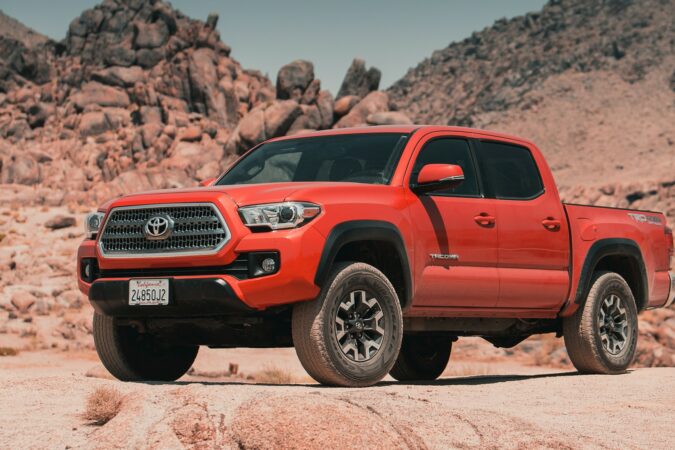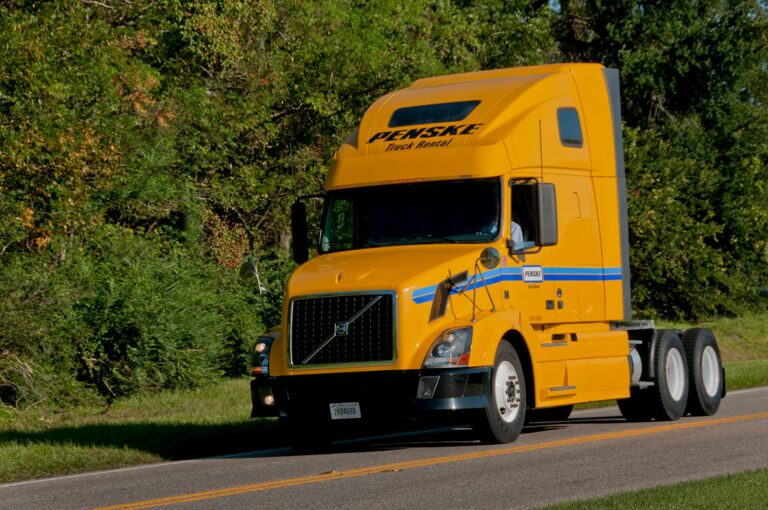Chevy Truck Bed Cap Size Chart: Your Ultimate Guide to Finding the Perfect Fit
Chevy Truck Bed Cap Size Chart: Your Ultimate Guide to Finding the Perfect Fit cars.truckstrend.com
A truck bed cap, often referred to as a topper, camper shell, or canopy, transforms the utility of your Chevrolet pickup. It converts your open truck bed into a secure, weather-protected, and often climate-controlled storage area, ideal for tools, gear, groceries, or even an impromptu camping setup. However, the effectiveness and aesthetic appeal of a truck bed cap hinge entirely on one critical factor: a perfect fit. This isn’t a one-size-fits-all scenario; Chevy trucks, across their diverse models and generations, boast a variety of bed dimensions. Navigating the "Chevy Truck Bed Cap Size Chart" is therefore paramount for any owner looking to add this invaluable accessory.
This comprehensive guide will demystify the process, helping you understand why precise sizing matters, how to accurately measure your Chevy’s bed, interpret cap size charts, and make an informed decision that enhances both the functionality and appearance of your truck.
Chevy Truck Bed Cap Size Chart: Your Ultimate Guide to Finding the Perfect Fit
Understanding Chevy Truck Bed Sizes: The Foundation of Fit
Before you even look at a cap, you must understand your truck’s bed. Chevrolet has produced numerous truck models over the decades, and each model, often across different generations, can come with multiple bed length options. The most common Chevy trucks you’ll find on the road today include:
- Chevrolet Silverado 1500: The light-duty, full-size pickup, often the most popular choice.
- Chevrolet Silverado 2500HD/3500HD: The heavy-duty versions, designed for greater towing and hauling.
- Chevrolet Colorado: Chevy’s mid-size pickup.
- Historical Models: S-10, C/K series, Avalanche (with its unique mid-gate design), each with specific bed configurations.

For each of these models, you’ll typically encounter three main bed lengths:
- Short Bed (or "Short Box"): Commonly found on crew cab configurations, these are the shortest beds. Approximate length: 5 feet 8 inches to 5 feet 10 inches.
- Standard Bed (or "Standard Box"): A versatile middle ground, often paired with double cabs or extended cabs. Approximate length: 6 feet 5 inches to 6 feet 7 inches.
- Long Bed (or "Long Box"): Predominantly found on regular cab or heavy-duty models, offering maximum cargo space. Approximate length: 8 feet 0 inches to 8 feet 2 inches.

Crucial Note: These are approximate lengths. The exact dimensions can vary by a few inches depending on the specific model year and body style. A 2018 Silverado’s "short bed" might be slightly different from a 2023 Silverado’s "short bed" due to subtle body redesigns. This minor difference can be the deciding factor between a perfect fit and a cap that simply won’t sit right or seal properly.
The Anatomy of a Truck Bed Cap Measurement
A truck bed cap isn’t just a rectangular box. It’s a precisely engineered accessory designed to conform to the contours of your truck’s bed rails, tailgate, and even the cab itself. Therefore, several dimensions are critical:
- Length: This is the most obvious measurement, matching the bed’s length from the bulkhead (the front of the bed, nearest the cab) to the tailgate.
- Width: Caps are designed to fit the width of the bed rails. This isn’t just one measurement; the width can subtly change from the front to the rear of the bed due to the truck’s tapering design.
- Cab Height: This is vital for cab-height caps, which are designed to sit flush with the top of your truck’s cab. This ensures a streamlined, factory-integrated look. Mid-rise and high-rise caps, by their nature, extend above the cab, so this measurement is less about a flush fit and more about ensuring adequate clearance.
- Rail Contours: Beyond simple length and width, modern truck beds have complex rail contours, including slight curves, bumps for stake pockets, and variations in height along the rail. A properly fitted cap accounts for these nuances, creating a tight, weather-sealed fit.

How to Measure Your Chevy Truck Bed for a Cap
While manufacturer charts are invaluable, always double-check with your own measurements. This is the most reliable way to ensure accuracy.
What you’ll need: A reliable tape measure (preferably a long one), a pen and paper, and ideally, a helper.
Steps for Accurate Measurement:
- Clear the Bed: Remove any obstacles from the bed rails, including toolboxes, bed liners (unless you plan to keep them in permanently and want the cap to fit over them), or debris.
- Measure Bed Length:
- Place the end of your tape measure at the inside top edge of the bulkhead (the front wall of the bed).
- Extend the tape measure straight back to the inside top edge of the tailgate.
- Record this measurement carefully.
- Measure Bed Width:
- Measure the width across the top of the bed rails at three points: near the bulkhead, in the middle of the bed, and near the tailgate.
- This accounts for any subtle tapering of the bed.
- Record all three width measurements.
- Measure Cab Height (for Cab-Height Caps):
- Park your truck on level ground.
- Place the end of your tape measure on the highest point of your truck’s bed rail, directly above the cab.
- Extend the tape measure vertically up to the highest point of your truck’s cab.
- Record this measurement. This ensures the cap will sit flush and look integrated.
- Note Key Details: Write down your truck’s exact year, make, model, and cab configuration (e.g., "2022 Chevrolet Silverado 1500, Crew Cab, Short Bed"). These details are crucial for cross-referencing with manufacturer charts.
Decoding the Chevy Truck Bed Cap Size Chart (General Principles)
It’s important to understand that Chevrolet itself doesn’t publish a "cap size chart." Instead, leading aftermarket cap manufacturers like ARE, Leer, SnugTop, ATC, Ranch, and others provide extensive fitment guides specific to their products. These guides are your "Chevy Truck Bed Cap Size Chart."
How these charts are organized:
- By Truck Manufacturer: First, you’ll select "Chevrolet."
- By Truck Model: Then, you’ll choose your specific model (e.g., "Silverado 1500," "Colorado").
- By Model Year Range: This is critically important. As mentioned, even minor body changes between model years require different cap molds. A cap for a 2018 Silverado will likely not fit a 2019 Silverado due to the complete redesign.
- By Cab Type and Bed Length: Finally, you’ll specify your truck’s cab configuration (Regular, Extended, Crew Cab) and its corresponding bed length (Short, Standard, Long).
Once you’ve narrowed down these parameters, the chart will typically list the compatible cap models or series that the manufacturer offers for your specific truck. Some charts might even provide the exact dimensions their caps are designed to fit, allowing you to cross-reference with your own measurements.
Example Chart Logic (Illustrative):
- Your Truck: 2021 Chevrolet Silverado 1500, Crew Cab, 5′ 10" Bed
- Manufacturer Chart Entry:
- Chevrolet -> Silverado 1500 -> 2019-Current -> Crew Cab -> 5′ 10" Bed
- Compatible Cap Models: Leer 100XQ, ARE Z Series, SnugTop Rebel, etc.
Key Considerations Beyond Size
While size is paramount, several other factors influence your cap purchase:
- Truck Model and Year: Reiterate this; it’s the most common mistake. Body lines, tailgate design, and bed rail caps change, requiring specific molds.
- Bed Liner/Bed Rug: If you have an over-the-rail bed liner, measure with it in place. Some caps are designed to sit over these, while others require them to be trimmed or removed.
- Truck Configuration: Crew Cab, Extended Cab, Regular Cab often dictate the available bed lengths, which in turn dictates the cap.
- Cab Height Match: For the best aesthetic integration, a cab-height cap that perfectly aligns with your truck’s roofline is ideal.
- Cap Style/Type:
- Cab-Height: Sleek, integrated look, popular for general use.
- Mid-Rise: Offers slightly more interior volume than cab-height, with a gentle rise.
- High-Rise (or "Commercial"): Maximizes cargo volume, often with a more utilitarian look, favored for commercial use or extensive camping setups.
- Features and Accessories: Consider windows (sliding, pop-out), interior lighting, roof racks, carpeted headliners, power locks, and side access doors. These add to functionality and cost.
Where to Find Specific Chevy Truck Bed Cap Size Charts
- Manufacturer Websites: This is your primary source. Visit the official websites of Leer, ARE, SnugTop, ATC, Ranch, etc. They typically have "Fitment Guides" or "Build Your Own" tools where you input your truck’s details.
- Authorized Dealers: Local and online authorized dealers of these brands often have comprehensive databases and can look up the correct cap for your VIN.
- Aftermarket Retailers: Large online truck accessory stores also compile their own fitment charts based on manufacturer data.
- Truck Forums and Communities: For older or less common models, online truck forums can be a valuable resource for finding information or even used caps that are known to fit specific vintage models.
Common Pitfalls and Solutions
- Incorrect Year/Model Selection: Double-check your truck’s exact year and model. Verify with your VIN if necessary. Solution: Always input precise information into online fitment guides.
- Measurement Errors: A slight mismeasurement can lead to a poor fit or a non-returnable cap. Solution: Measure twice (or thrice!), have a helper, and use a reliable tape measure.
- Aftermarket Bed Liners: These can slightly alter the bed’s internal dimensions. Solution: Measure with the liner in place if you intend to keep it. Many caps are designed to accommodate common drop-in liners.
- Buying Used Caps: While cost-effective, buying a used cap requires extreme diligence. Ensure the seller can provide the exact year, make, and model of the truck the cap came off of. Even then, verify dimensions if possible. Solution: Be highly skeptical and confirm fitment before purchase.
- Discontinued Models: Finding a new cap for an older, discontinued Chevy truck (like an S-10 or a specific generation of C/K series) can be challenging. Solution: Look for used caps, consider custom builders (more expensive), or be prepared for a less-than-perfect universal fit.
Practical Advice and Actionable Insights
- Measure Your Truck First, Always: This cannot be stressed enough. Marketing terms like "short bed" are relative; your tape measure provides the absolute truth.
- Verify Your Truck’s Specifics: Know your truck’s exact year, model, and cab configuration inside and out.
- Consult Manufacturer Charts: Once you have your measurements, use the online fitment guides from reputable cap manufacturers. This is your definitive "Chevy Truck Bed Cap Size Chart."
- Consider Professional Installation: While some DIY enthusiasts can install caps, professional installation ensures proper sealing against water and dust, correct wiring for lights/locks, and adherence to warranty requirements.
- Think About Your Use Case: Your primary use (daily security, occasional camping, heavy-duty work) will influence the cap style (cab-height, mid-rise, high-rise) and features you need, all of which affect price.
- Don’t Forget the Details: Cab contour, tailgate design, and bed rail cap variations are all taken into account by custom-molded caps. Ensure the cap you choose is specifically designed for your truck’s unique body.
Illustrative Chevy Truck Bed Cap Size & Price Chart
Please note: This table is illustrative. Actual prices vary wildly based on manufacturer, materials (fiberglass, aluminum), features (windows, lighting, racks, paint match), and installation costs. Always get a custom quote from a dealer for your specific truck and desired cap. The "Cap Manufacturer & Series Example" column shows types of caps commonly available for that configuration.
| Truck Model & Year Range | Cab Type (Common) | Bed Length (Approx.) | Bed Length (Exact Inches) | Cap Manufacturer & Series Example | Estimated Price Range (USD) | Notes & Features |
|---|---|---|---|---|---|---|
| Silverado 1500 (2019-Current) | Crew Cab | Short Bed | 69.9" (5′ 10") | ARE Z-Series / Leer 100XQ | $2,200 – $4,000+ | Popular, sleek, cab-height, often with carpeted interior, frameless windows, LED light. Price varies with features. |
| Silverado 1500 (2019-Current) | Double Cab | Standard Bed | 79.4" (6′ 7") | SnugTop Rebel / ATC Spectrum | $2,300 – $4,200+ | Mid-rise design for more cargo volume, typically with sliding side windows and brake light. |
| Silverado 2500/3500HD (2020-Current) | Any (Crew/Double) | Long Bed | 98.2" (8′ 2") | Leer 122 / ARE DCU (Commercial) | $2,500 – $5,500+ | High-rise for maximum capacity, often available in fiberglass or aluminum commercial models with various door/storage configurations. |
| Colorado (2015-Current) | Crew Cab | Short Bed | 61.7" (5′ 2") | ARE CX Evolve / Leer 100R | $1,900 – $3,500+ | Designed for mid-size trucks, often with traditional framed windows. |
| Colorado (2015-Current) | Extended Cab | Long Bed | 74.0" (6′ 2") | SnugTop Sport Hi-Liner / ATC | $2,000 – $3,800+ | Offers more headroom than cab-height, good for light commercial or camping use. |
| Silverado (2007-2013) | Any (Common) | Short Bed | 69.3" (5′ 9") | Leer 100XL / ARE V-Series | $1,500 – $3,000+ | Older generation, still widely available new or used. Fitment is specific to this body style. |
| Silverado (2007-2013) | Any (Common) | Standard Bed | 78.7" (6′ 6") | ARE MX Series / Ranch Sierra | $1,600 – $3,200+ | Mid-rise or cab-height options available for this popular generation. |
Disclaimer: All prices are estimates and can vary significantly. Features, materials, brand, and installation costs greatly influence the final price. Always confirm exact dimensions with your truck and the cap manufacturer’s fitment guide.
Frequently Asked Questions (FAQ)
Q: Can I use a cap from a Ford or Ram on my Chevy truck?
A: Generally, no. Truck beds from different manufacturers (and even different models/generations within the same manufacturer) have unique dimensions, bed rail contours, and tailgate designs. A cap designed for a Ford F-150 will almost certainly not fit a Chevy Silverado properly.
Q: Do I need professional installation for a truck bed cap?
A: While some handy individuals might attempt it, professional installation is highly recommended. It ensures proper sealing against water and dust, correct wiring for interior lights and third brake lights, and secure mounting that won’t damage your truck or the cap. It also often preserves the cap’s warranty.
Q: Will my existing bed liner affect the cap’s fit?
A: Yes, it can. Over-the-rail bed liners add thickness to the bed rails, which a cap needs to sit on. If you have one, measure your bed with the liner in place. Many cap manufacturers design their products to accommodate common drop-in liners, but it’s always best to verify.
Q: How do I know my exact bed length? My truck says "Short Bed," but I’ve heard they vary.
A: The most reliable way is to measure it yourself with a tape measure, from the inside front bulkhead to the inside rear of the tailgate. Marketing terms like "short bed" are often approximations and can indeed vary by a few inches between model years or even trims.
Q: Are caps interchangeable between different generations of the same Chevy model (e.g., a 2018 Silverado cap on a 2019 Silverado)?
A: Rarely. When Chevrolet redesigns a truck model (which typically happens every 5-7 years), the body lines, bed dimensions, and tailgate designs change significantly. A cap from an older generation will almost certainly not fit the newer generation correctly.
Q: What’s the difference between cab-height, mid-rise, and high-rise caps?
A:
- Cab-height: Sits flush with the top of your truck’s cab, offering a streamlined, integrated look.
- Mid-rise: Gently rises above the cab, providing slightly more interior cargo volume and headroom than a cab-height cap, while still maintaining a relatively sleek profile.
- High-rise (or Commercial): Extends significantly above the cab, maximizing interior cargo space. These are often used for work, camping, or when large items need to be transported. Their appearance is more utilitarian.
Q: Can I paint my cap to match my truck’s color?
A: Yes. Most reputable cap manufacturers offer factory color-matching services, often using your truck’s paint code to ensure an exact match. If buying a used cap, a professional automotive body shop can also paint it to match your truck.
Concluding Summary
Selecting the correct truck bed cap for your Chevy is a decision that impacts both the functionality and aesthetics of your vehicle. The "Chevy Truck Bed Cap Size Chart" isn’t a single document from Chevrolet, but rather a collective term for the precise fitment guides provided by cap manufacturers. By understanding your truck’s exact model, year, and bed dimensions, and by diligently consulting these manufacturer-specific charts, you can confidently choose a cap that offers a seamless, weather-tight, and secure fit.
Remember to measure your truck accurately, consider your specific needs for the cap, and don’t hesitate to seek professional advice or installation. A perfectly fitted truck bed cap will not only protect your cargo but also enhance the versatility and value of your Chevrolet pickup for years to come.






